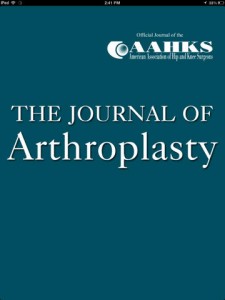Dexamethasone Reduces Length of Hospitalization and Improves Postoperative Pain and Nausea After Total Joint Arthroplasty: A Prospective, Randomized Controlled Trial
Jeffrey R. Backes, MD, Jared C. Bentley, MD, Joel R. Politi, MD, Bryan T. Chambers, MD
Journal of Arthroplasty, Volume 28, Issue 8, Supplement , Pages 11-17, September 2013
Level 1 Randomised Control Trial
- A level I randomized control trial to assess the influence of peri-operative dexamethasone on post-operative i] analgesia ii] mobility iii] anti emetic effects and iv] the length of stay at the hospital.
Materials and Methods:
- Patients and interventions: 120 patients undergoing total hip and knee arthroplasty were randomized to 3 groups.
- I – control group,
- II – study group 1 were administered 10 mg of iv dexamethasone prior to induction
- III – study group 2 – received an additional identical dose of iv dexamethasone 24 hours postoperatively.
- Intravenous dexamethasone was administered in the 2 study groups as part of a multimodal pain regimen, which was otherwise same across 3 groups.
Results:
- Study group 1 demonstrated significantly better i] pain and nausea scores ii] ambulated longer distances iii] consumed less analgesics and rescue anti-emetic medications and iv] stayed for a shorter period at the hospital compared to the control group (P < 0.05).
- Study group 2 demonstrated a continuous beneficial effect with patients consuming lesser analgesics and anti-emetic medications on postoperative day 2 and later and had a further reduction in hospital stay compared to study group 1 (P <0.05). The 2nd dose of dexamethasone however had no effect on ambulatory distance.
Conclusion:
- Addition of iv dexamethasone to a multimodal pain regimen provides better pain and nausea control, enhances mobility and reduces hospital stay. A second identical dose further reduces hospital stay and enhances pain and nausea control.
Submitted by Dr Ashok Sunil Gavaskar

hola